Opinion & Analysis
Where does the golf ball go from here?
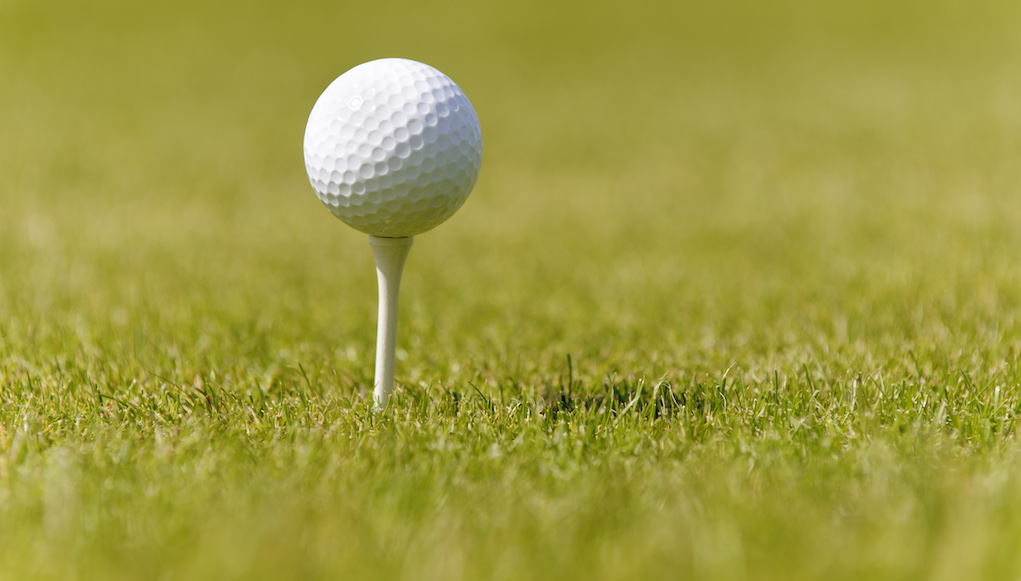
According to an unusual statistic I came across recently there are 2,378 golf balls in the air during any given second around the world. Or to extend that out, it equates to 75 billion seconds of golf ball “airtime” per year. So it’s true golf balls play a significant role to golfers.
Right now there’s a lot of buzz in the ball market with big claims being made from a raft of new entrants. New models claim to be longer off the tee and offer more spin from short range while suppling buttery softness and feel. The industry standard premium ball, Titleist’s Pro V1, has consistently led the way in terms of performance since its launch in 2000. Bridgestone, Callaway, Srixon and TaylorMade are also competing at the top end of the market, which is defined at up to $4 per ball.
But imagine getting all that performance at a fraction of that price? Golfers are starting to sit up and take notice. Should Titleist and the other premium golf ball manufacturers be quaking in their corporate boots? And where does golf ball evolution go from here?
Who Makes the Best Golf Balls?
The ideal ball is one that maximizes distance through low spin with the driver, minimizes the effect of wind, stays straight on off-center hits and spins when it hits the green and offer the right feel.
If you ask Tiger Woods what the best golf balls are, he would say Bridgestone (he’s a brand endorser and uses the company’s B330S). Jordan Speith would say Titleist (he uses a ProV1x) and Phil Mickelson would say Callaway (he uses a Chrome Soft). If you ask a 20-handicap golfer the same question, he or she would probably say any number of brands and balls. And it’s not simply an endorsement issue; it comes down to the requirements of the player. In other words, what ball best suits a golfer’s needs in terms of performance… and of course, what’s the price?
It’s kind of like asking who makes the best beer. It’s a topic that sparks ongoing debate in bars all round the world, because everyone has their own favorite. It’s the same with golf balls. Brand loyalty and marketing play a big part in a golfer’s purchasing decision, and improvements in technology have made “the best ball” hard to define.
One thing is for sure, the market is certainly evolving. With the news that Rory McIlroy has chosen to return to Titleist’s Pro V1x golf ball and Bubba Watson will play Volvik’s S4 in pink, we are seeing success by both new and old brands.
Trending Technologies
There is so much technology behind golf balls these days. Polymers and associated materials are advancing at rapid rates, and computer aided design is enabling a better understanding of aerodynamics and performance. Manufacturing is getting more sophisticated and ball-testing technology can optimize the effects of dimples size and shape, spin, attack angles and aerodynamics.
The theory that every player is different is substantiated by Bridgestone, which has invested heavily in its golf-ball testing research and has more than two million swings in its database.
“Getting fitted for your ball is like getting fitted for your driver,” says Adam Rehberg, Bridgestone’s Head of Golf Ball Fitting. “Swing speed, launch angles and spin rates will point you toward a specific ball to optimize your goals. We are very enthusiastic at Bridgestone, as we don’t just make one ball. We are constantly pushing boundaries, and being part of a conglomerate, Bridgestone Golf balls has access to a ton of R&D from Bridgestone Tires. Polymers being used on tires today will undoubtedly be put into play by Bridgestone Golf.”
One Ball for One Swing?
According to Bridgestone’s swing database research, we are all different and swing a golf club differently.
“We gather real golfer data, not just generated from a robot,” Rehberg says. “We realize that people will not hit the ball perfectly. They will have different swing speeds, attack angles and face angles. Golfers should play a profile of ball that meets their needs that will optimize their performance, be that a slower swing speed or better feel round the green.”
But this tee-to-green strategy is different from Titleist’s recent advertising campaigns that say either its Pro V1 or Pro V1x will be the best-performing Titleist golf ball for golfers whatever their level of play.
Titleist takes a green-to-tee approach in its golf ball development and fitting, which involves an evaluation of all shots on the golf course. The greatest emphasis is placed on shots into and around the green, because “the golf ball that performs best on these shots is your key to lower scores,” the company says.
“Many golfers are led to believe they should be fit for a golf ball based solely on their driver swing speed,” the company says. “This is a flawed approach. The truth is golfers use a wide range of swing speeds to execute the vast array of shots required in every round. The golf ball must perform with every club, at every speed, on every shot.”
So in theory, a 20-handicap golfer can play exactly the same ball as their golfing idol does. But who is right?
New Players in the Market
In recent years, the golf ball industry has become packed with new entrants and existing companies that have created an ever-expanding array of models. New players like Vice, Snell, MG and Kirkland are offering urethane-covered golf balls at significantly lower prices. Test data and on-course feedback from golfers suggest that the technology gap is narrowing and more direct-to-market channels enable these companies to reduce overheads.
Judging by some social media-generated player feedback and by sales of these new entrants, golfers are buying into the price-performance deal. And then you have companies like Volvik with their new S3/S4 balls available now in different colors, not to mention Callaway’s success with its Chrome Soft Truvis golf balls, which have soccer ball-like graphics and sold so well Callaway struggled to meet demand.
New Ways to Buy Balls
Balls are also more likely to be bought online rather than through a pro shop these days.
“Trends are showing that consumers are more comfortable buying stuff on their mobile devices” said Elliot Mellow, Bridgestone’s Head of Golf Ball Fitting. “We have changed our channel model selling more direct online through our own website and partner websites and anticipate that to grow.”
It’s easy to see how technology can push down golf ball prices. There are already scenarios in the future that see a drone delivering a consignment of balls to the first tee before you play, presumably ordered on your smart phone that day.
The Golf Ball of the Future
So how will the golf ball of the future differ? It took 200 years for the featherie to make it to the guttie. How long will we have to wait for the next generation breakthrough?
Talking to Dean Snell is a fascinating insight into ball technology, history and engineering. He worked at Titleist to develop the Pro V1 and then at TaylorMade to design its Penta golf balls. Now he heads up his own golf ball company, Snell Golf, and is adamant that the ball regulations are so tight now that the distance feature has been maxed out.
“The area to focus in on now is from 150 yards and in,” he said. “And essentially that means spin rates.” And he doesn’t just focus on balls for pro golfers. At TaylorMade, he was behind its Noodle, Burner, RocketBallz and Project (a) golf balls, which were designed to perform for average golfers.
Snell says many golfers are being mis-sold on the concept that they need a lower-compression ball for slower swing speeds, believing that it will give them greater distance.
“Based on a 100 mph swing hitting the ball 250 yards, a low-compression ball will only add about one extra yard of distance compared to a higher compression ball,” he says. “But this tiny pick-up in distance is completely offset with lack of feel and ability to spin the ball on or around the green. In order to get enough backspin, you have to have a big enough contact area and you have to have the cover going into the grooves. A very hard ball, even if it had a soft cover, it wouldn’t be interacting with very many grooves, so you do actually need it to deform a certain amount.”
Bridgestone, on the other hand, is adamant it can help golfers hit the ball farther.
“We have invested a lot of R&D research into aerodynamics,” Elliot says. “Our ‘Dual-Dimple Pattern’ will offer less drag and shallow out the landing angle for more roll-out. We will be introducing a new dimple in 2017 that will also add stability and added forgiveness. In addition, we see next generation advances in the ball core. We are moving to a gradational-compression core technology. This will offer one-piece performance, but act like a dual core. We see this offering significant added distance.”
The ball of the future may also be optically different, be it in color or design. Like Volvik and Callaway, Bridgestone representatives see the value of color in certain ball segments, but they say it less than 5 percent of total sales. But they’re working on something novel as well.
“We are always looking at ways to help the golfer and I have a new optics-driven concept ball sitting in my desk right now that we are very excited about,” Elliot says. “It will be very different than anything else on the market. It is still in the R&D stage and will involve a different manufacturing process, but it could be available on the market in 2017.”
Is It All Just a Load of Balls?
Lots of golfers couldn’t care less about what ball they play, especially if they are at the beginner or less-advanced stage. Given that they will be donating a lot of balls per round to the local wildlife, they want something that delivers price performance. After all, they can hit a TaylorMade just as far into the woods as they can hit a Top Flight. But there are differences in performance between brands and models. How much of it is a placebo effect? We all love our golf brands and are passionate about how much superior they are to the competition… but we say the same about our beer, our cars, our phones and everything else.
To succeed in the golf ball business is all about winning user acceptance and distribution. The barriers to entry have diminished a lot over the last 10 years. If Microsoft or Apple decided to muscle in, it would become very interesting indeed.
So you can wrap yourself up in all the ball technology you want. Heck, I’m a lifelong marketing guy; I know how it all works. But the truth is play the ball you’re most comfortable using, one that matches your skill level, personality and pocket.
Bubba summed it up pretty well in his recent signing with Volvik. “As long as the performance differences are not huge, I can have a lot more fun hitting a pink golf ball, so why not?”
- LIKE181
- LEGIT17
- WOW10
- LOL7
- IDHT2
- FLOP3
- OB4
- SHANK15
19th Hole
Vincenzi’s 2024 Zurich Classic of New Orleans betting preview

The PGA TOUR heads to New Orleans to play the 2023 Zurich Classic of New Orleans. In a welcome change from the usual stroke play, the Zurich Classic is a team event. On Thursday and Saturday, the teams play best ball, and on Friday and Sunday the teams play alternate shot.
TPC Louisiana is a par 72 that measures 7,425 yards. The course features some short par 4s and plenty of water and bunkers, which makes for a lot of exciting risk/reward scenarios for competitors. Pete Dye designed the course in 2004 specifically for the Zurich Classic, although the event didn’t make its debut until 2007 because of Hurricane Katrina.
Coming off of the Masters and a signature event in consecutive weeks, the field this week is a step down, and understandably so. Many of the world’s top players will be using this time to rest after a busy stretch.
However, there are some interesting teams this season with some stars making surprise appearances in the team event. Some notable teams include Patrick Cantlay and Xander Schauffele, Rory McIlroy and Shane Lowry, Collin Morikawa and Kurt Kitayama, Will Zalatoris and Sahith Theegala as well as a few Canadian teams, Nick Taylor and Adam Hadwin and Taylor Pendrith and Corey Conners.
Past Winners at TPC Louisiana
- 2023: Riley/Hardy (-30)
- 2022: Cantlay/Schauffele (-29)
- 2021: Leishman/Smith (-20)
- 2019: Palmer/Rahm (-26)
- 2018: Horschel/Piercy (-22)
- 2017: Blixt/Smith (-27)
2024 Zurich Classic of New Orleans Picks
Tom Hoge/Maverick McNealy +2500 (DraftKings)
Tom Hoge is coming off of a solid T18 finish at the RBC Heritage and finished T13 at last year’s Zurich Classic alongside Harris English.
This season, Hoge is having one of his best years on Tour in terms of Strokes Gained: Approach. In his last 24 rounds, the only player to top him on the category is Scottie Scheffler. Hoge has been solid on Pete Dye designs, ranking 28th in the field over his past 36 rounds.
McNealy is also having a solid season. He’s finished T6 at the Waste Management Phoenix Open and T9 at the PLAYERS Championship. He recently started working with world renowned swing coach, Butch Harmon, and its seemingly paid dividends in 2024.
Keith Mitchell/Joel Dahmen +4000 (DraftKings)
Keith Mitchell is having a fantastic season, finishing in the top-20 of five of his past seven starts on Tour. Most recently, Mitchell finished T14 at the Valero Texas Open and gained a whopping 6.0 strokes off the tee. He finished 6th at last year’s Zurich Classic.
Joel Dahmen is having a resurgent year and has been dialed in with his irons. He also has a T11 finish at the PLAYERS Championship at TPC Sawgrass which is another Pete Dye track. With Mitchell’s length and Dahmen’s ability to put it close with his short irons, the Mitchell/Dahmen combination will be dangerous this week.
Taylor Moore/Matt NeSmith +6500 (DraftKings)
Taylor Moore has quickly developed into one of the more consistent players on Tour. He’s finished in the top-20 in three of his past four starts, including a very impressive showing at The Masters, finishing T20. He’s also finished T4 at this event in consecutive seasons alongside Matt NeSmith.
NeSmith isn’t having a great 2024, but has seemed to elevate his game in this format. He finished T26 at Pete Dye’s TPC Sawgrass, which gives the 30-year-old something to build off of. NeSmith is also a great putter on Bermudagrass, which could help elevate Moore’s ball striking prowess.
- LIKE6
- LEGIT1
- WOW1
- LOL0
- IDHT0
- FLOP2
- OB1
- SHANK1
19th Hole
Vincenzi’s 2024 LIV Adelaide betting preview: Cam Smith ready for big week down under

After having four of the top twelve players on the leaderboard at The Masters, LIV Golf is set for their fifth event of the season: LIV Adelaide.
For both LIV fans and golf fans in Australia, LIV Adelaide is one of the most anticipated events of the year. With 35,000 people expected to attend each day of the tournament, the Grange Golf Club will be crawling with fans who are passionate about the sport of golf. The 12th hole, better known as “the watering hole”, is sure to have the rowdiest of the fans cheering after a long day of drinking some Leishman Lager.
The Grange Golf Club is a par-72 that measures 6,946 yards. The course features minimal resistance, as golfers went extremely low last season. In 2023, Talor Gooch shot consecutive rounds of 62 on Thursday and Friday, giving himself a gigantic cushion heading into championship Sunday. Things got tight for a while, but in the end, the Oklahoma State product was able to hold off The Crushers’ Anirban Lahiri for a three-shot victory.
The Four Aces won the team competition with the Range Goats finishing second.
*All Images Courtesy of LIV Golf*
Past Winners at LIV Adelaide
- 2023: Talor Gooch (-19)
Stat Leaders Through LIV Miami
Green in Regulation
- Richard Bland
- Jon Rahm
- Paul Casey
Fairways Hit
- Abraham Ancer
- Graeme McDowell
- Henrik Stenson
Driving Distance
- Bryson DeChambeau
- Joaquin Niemann
- Dean Burmester
Putting
- Cameron Smith
- Louis Oosthuizen
- Matt Jones
2024 LIV Adelaide Picks
Cameron Smith +1400 (DraftKings)
When I pulled up the odds for LIV Adelaide, I was more than a little surprised to see multiple golfers listed ahead of Cameron Smith on the betting board. A few starts ago, Cam finished runner-up at LIV Hong Kong, which is a golf course that absolutely suits his eye. Augusta National in another course that Smith could roll out of bed and finish in the top-ten at, and he did so two weeks ago at The Masters, finishing T6.
At Augusta, he gained strokes on the field on approach, off the tee (slightly), and of course, around the green and putting. Smith able to get in the mix at a major championship despite coming into the week feeling under the weather tells me that his game is once again rounding into form.
The Grange Golf Club is another course that undoubtedly suits the Australian. Smith is obviously incredibly comfortable playing in front of the Aussie faithful and has won three Australian PGA Championship’s. The course is very short and will allow Smith to play conservative off the tee, mitigating his most glaring weakness. With birdies available all over the golf course, there’s a chance the event turns into a putting contest, and there’s no one on the planet I’d rather have in one of those than Cam Smith.

Louis Oosthuizen +2200 (DraftKings)
Louis Oosthuizen has simply been one of the best players on LIV in the 2024 seas0n. The South African has finished in the top-10 on the LIV leaderboard in three of his five starts, with his best coming in Jeddah, where he finished T2. Perhaps more impressively, Oosthuizen finished T7 at LIV Miami, which took place at Doral’s “Blue Monster”, an absolutely massive golf course. Given that Louis is on the shorter side in terms of distance off the tee, his ability to play well in Miami shows how dialed he is with the irons this season.
In addition to the LIV finishes, Oosthuizen won back-to-back starts on the DP World Tour in December at the Alfred Dunhill Championship and the Mauritus Open. He also finished runner-up at the end of February in the International Series Oman. The 41-year-old has been one of the most consistent performers of 2024, regardless of tour.
For the season, Louis ranks 4th on LIV in birdies made, T9 in fairways hit and first in putting. He ranks 32nd in driving distance, but that won’t be an issue at this short course. Last season, he finished T11 at the event, but was in decent position going into the final round but fell back after shooting 70 while the rest of the field went low. This season, Oosthuizen comes into the event in peak form, and the course should be a perfect fit for his smooth swing and hot putter this week.

- LIKE10
- LEGIT2
- WOW0
- LOL1
- IDHT0
- FLOP1
- OB1
- SHANK1
Opinion & Analysis
The Wedge Guy: What really makes a wedge work? Part 1

Of all the clubs in our bags, wedges are almost always the simplest in construction and, therefore, the easiest to analyze what might make one work differently from another if you know what to look for.
Wedges are a lot less mysterious than drivers, of course, as the major brands are working with a lot of “pixie dust” inside these modern marvels. That’s carrying over more to irons now, with so many new models featuring internal multi-material technologies, and almost all of them having a “badge” or insert in the back to allow more complex graphics while hiding the actual distribution of mass.
But when it comes to wedges, most on the market today are still single pieces of molded steel, either cast or forged into that shape. So, if you look closely at where the mass is distributed, it’s pretty clear how that wedge is going to perform.
To start, because of their wider soles, the majority of the mass of almost any wedge is along the bottom third of the clubhead. So, the best wedge shots are always those hit between the 2nd and 5th grooves so that more mass is directly behind that impact. Elite tour professionals practice incessantly to learn to do that consistently, wearing out a spot about the size of a penny right there. If impact moves higher than that, the face is dramatically thinner, so smash factor is compromised significantly, which reduces the overall distance the ball will fly.
Every one of us, tour players included, knows that maddening shot that we feel a bit high on the face and it doesn’t go anywhere, it’s not your fault.
If your wedges show a wear pattern the size of a silver dollar, and centered above the 3rd or 4th groove, you are not getting anywhere near the same performance from shot to shot. Robot testing proves impact even two to three grooves higher in the face can cause distance loss of up to 35 to 55 feet with modern ‘tour design’ wedges.
In addition, as impact moves above the center of mass, the golf club principle of gear effect causes the ball to fly higher with less spin. Think of modern drivers for a minute. The “holy grail” of driving is high launch and low spin, and the driver engineers are pulling out all stops to get the mass as low in the clubhead as possible to optimize this combination.
Where is all the mass in your wedges? Low. So, disregarding the higher lofts, wedges “want” to launch the ball high with low spin – exactly the opposite of what good wedge play requires penetrating ball flight with high spin.
While almost all major brand wedges have begun putting a tiny bit more thickness in the top portion of the clubhead, conventional and modern ‘tour design’ wedges perform pretty much like they always have. Elite players learn to hit those crisp, spinny penetrating wedge shots by spending lots of practice time learning to consistently make contact low in the face.
So, what about grooves and face texture?
Grooves on any club can only do so much, and no one has any material advantage here. The USGA tightly defines what we manufacturers can do with grooves and face texture, and modern manufacturing techniques allow all of us to push those limits ever closer. And we all do. End of story.
Then there’s the topic of bounce and grinds, the most complex and confusing part of the wedge formula. Many top brands offer a complex array of sole configurations, all of them admittedly specialized to a particular kind of lie or turf conditions, and/or a particular divot pattern.
But if you don’t play the same turf all the time, and make the same size divot on every swing, how would you ever figure this out?
The only way is to take any wedge you are considering and play it a few rounds, hitting all the shots you face and observing the results. There’s simply no other way.
So, hopefully this will inspire a lively conversation in our comments section, and I’ll chime in to answer any questions you might have.
And next week, I’ll dive into the rest of the wedge formula. Yes, shafts, grips and specifications are essential, too.
- LIKE31
- LEGIT7
- WOW1
- LOL1
- IDHT2
- FLOP3
- OB1
- SHANK3
-

 19th Hole2 weeks ago
19th Hole2 weeks agoDave Portnoy places monstrous outright bet for the 2024 Masters
-

 19th Hole2 weeks ago
19th Hole2 weeks agoTiger Woods arrives at 2024 Masters equipped with a putter that may surprise you
-

 19th Hole19 hours ago
19th Hole19 hours ago‘Absolutely crazy’ – Major champ lays into Patrick Cantlay over his decision on final hole of RBC Heritage
-

 19th Hole3 weeks ago
19th Hole3 weeks agoReport: Tiger Woods has ‘eliminated sex’ in preparation for the 2024 Masters
-

 19th Hole1 week ago
19th Hole1 week agoTwo star names reportedly blanked Jon Rahm all week at the Masters
-

 19th Hole7 days ago
19th Hole7 days agoReport: LIV Golf identifies latest star name they hope to sign to breakaway tour
-

 19th Hole1 week ago
19th Hole1 week agoNeal Shipley presser ends in awkward fashion after reporter claims Tiger handed him note on 8th fairway
-

 19th Hole6 days ago
19th Hole6 days agoBrandel Chamblee has ‘no doubt’ who started the McIlroy/LIV rumor and why



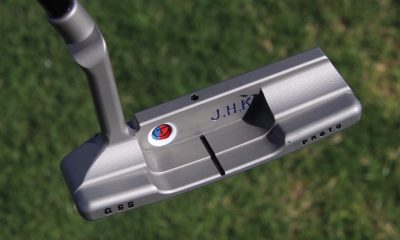



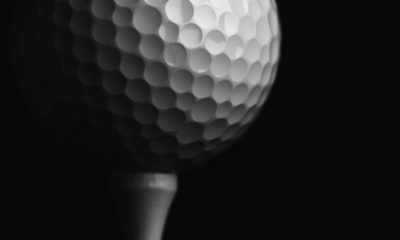

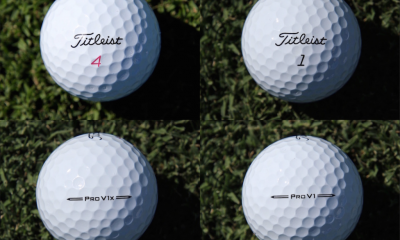

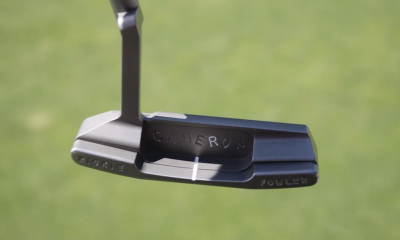

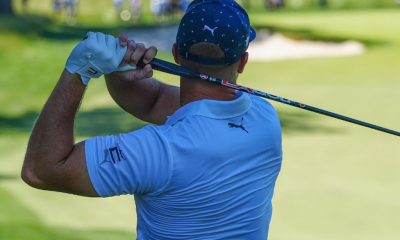













rasel
Oct 2, 2017 at 1:54 am
its a really great idea that you have described here. thanks a lot for this best idea
Joey
Feb 23, 2017 at 2:15 pm
Is it just me or do other people just hate when you are playing with people and they will tell you ball doesn’t matter. I was playing the other day and I bought some b330s golf balls and he was wondering why I bought them instead of Top Flights that are half the price. Does anyone know something smart that i can say back to people who comment on balls that i use?
Miuralovechild
Feb 6, 2017 at 1:20 am
I can’t wait for the Sams Choice ball from Sam’s Club. They won’t let Costco dominate the ball market.
Dan
Feb 12, 2017 at 10:41 pm
more likely it will be an Amazon ball right? I’ve been buying all my golf balls from Amazon for the last year+. It’s only a matter of time before they get the same factory as Costco to make their own “prime” ball.
Eye4Golf-Albuquerque
Feb 1, 2017 at 9:31 pm
I play on city courses 95% of the time and play 3 times a week, so high end premium balls are not a good return on investment. If you play on high end courses you see some improvement if you play to a 6-12 hdcp, higher no help, lower no brainier. Last time I read the average golfer shoots in mid 90’s. I think it’s great to have such a variety of value priced quality balls Snell,Vice, Wilson Staff and others from $12-32 dozen. Duo’s yellow in winter and Kirkland rest of time are my favorites. Finding the right ball is easier and cheaper than golf clubs.
Kyle p
Feb 1, 2017 at 12:05 pm
I’ve read that article countless times with only slight variations over the years with regards to balls and clubs. It comes across as a child writing a report.
I’m asking the editor, please don’t post articles just for the sake of filling up space.
This website has always been knowledgeable and insightful and I hope that resumes in the future.
Stevegp
Feb 1, 2017 at 12:41 am
Interesting summation article. You “use” the golf ball on every shot. The ball you choose is important (IMHO). The golf ball also is the least expensive piece of equipment you purchase and one that can impact every shot, enjoyment of the game, and your performance.
S Hitter
Feb 1, 2017 at 1:28 am
No, the least expensive piece of equipment is the tee that you put your ball on
Jim
Jan 31, 2017 at 5:26 pm
Absolutely time for ‘the official tournament ball’
a barrel full on the range and every player loads their bag with them. Period. Different mfrs can sponsor events and their ‘tour compliant’ ball will be the one used that week.
let the pampered ones cry. They’ll still all have their endorsement deals on the side
george
Jan 31, 2017 at 11:54 am
Well, I’ve still got 10 dz B330-RX in the basement. I guess I’ll have to wait another two months zu select a new and improved ball… 😉
cgasucks
Jan 31, 2017 at 8:30 am
When it comes to buying new tour level quality balls, the KSig gives you the best deal for your hard earned dollars. I will count the days when it will come back (as per their Chairman’s comments).
Tim
Jan 31, 2017 at 6:23 pm
Going a little far calling the KSig a tour level ball…good ball for amateurs yes….you know the Costco ball does not or did not go through all the testing a Prov1 or other tour balls go through right…I think you will find the real threat of the KSig ball is for all the off tour balls all the big boys sell…Who would pay $22 or more for a hard cover ball if you could get a urethane ball for $15 a dozen…that is the real threat
Brian
Jan 31, 2017 at 8:40 pm
Michael Breed, is that you?
Mark
Jan 31, 2017 at 2:42 am
Hopefully more affordable. Kirkland have rocked the boat but you find a lot of golfers who want expensive and would not be seen dead with anything that wasn’t from a premium priced brand. And are off 20 and hit it all over the parish and then spend an inordinate amount of time looking for them. “It’s lost mate, this is where Elephants come to die. Not a chance…these are £3.50 each”….
JuNiOR
Jan 31, 2017 at 12:24 am
Who Makes the Best Golf Balls?
Hands down the Kirkland Signature 4 piece!!!
1. Performance
2. Price
3. Did I say price….$30.00 for 2 DOZEN
Jim
Jan 31, 2017 at 12:39 am
Your talking about an ok ball for the White Tee 15 to 20 handicapper….for a real player, one who makes birdies from the Blue or Back tees the higher end balls are going to be better…why, because the high end balls (Prov1 etc) are built to be and play better…at best with a Kirkland ball your getting a ball with play ability 5 or more years old. Fine for those that just not going to get any better..
Brian
Jan 31, 2017 at 8:43 pm
Is Titleist paying you per post or an hourly rate?
STeve S
Jan 31, 2017 at 8:52 pm
Have you seen the testing? Ksig numbers within experimental error of the 2016 Pro V1. If it’s 5 year old technology that means all the BS about new technology is just that…BS.
SV
Feb 1, 2017 at 9:53 am
A rather snarky comment. Actually a player will do his best with a ball that suits him and they don’t have to be tour level and cost $50 per dozen. Just because someone doesn’t want to pay an exorbitant price for balls doesn’t mean they can’t play. My favorite balls, which unfortunately are no longer available, are the Srixon AD333 and Callaway Diablo HX Tour. By the way, I am 68 years old, play to a 5 handicap and play to it from any set of tees.
MiloTheMarauder
Jan 30, 2017 at 8:33 pm
I’m looking forward to playing the new Chrome soft X, hopefully in Truvis.
Adam
Jan 30, 2017 at 7:01 pm
Hopefully it goes in the hole a lot more and sooner on each hole!
Geoff
Jan 30, 2017 at 1:19 pm
I’ve played the Chromax ball for about 3 years and it simply outperforms other premium balls that I’ve played. They really run out a little more on Drives, approaches and putts. Most players want more distance on their Driver and they often miss greens and putts short. Urethane balls produce more spin of the driver which causes the ball to hook or slice more and stop quickly on a good drive, while the Chromax ball is very straight and picks up a couple of extra yards. On approach shots, the urethane ball will stop and spin back; if most misses are short, you don’t want the ball to spin back. The Chromax ball takes a hop forward and then stops for me. On putts, the urethane ball grips each imperfection on the green and slows down the ball. I hate the putts you leave inches short with the perfect line—that is far less likely to happen with this ball. Pull and hit the same clubs you normally would and hit more greens and hole more putts, it’s really a no-brainer. I’m very happy with the Chromax O.V. ball.
Ian
Jan 31, 2017 at 1:42 pm
who should they make the endorsement check out to?
Geoff
Jan 31, 2017 at 5:39 pm
Ha, me I would think!